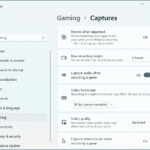
End-to-end agile testing refers to the process of testing a product as it goes through development. It involves a number of different types of tests, including unit tests and functional tests, which are run at each iteration. While agile testing is often done with a white box approach—testing without any access to the source code—it can also be done using black box techniques, where access to the source code is available.
It’s useful because it allows you to test a complete product, rather than just parts of it, in a way that’s more realistic and less prone to error.
The biggest advantage of end-to-end testing agile is that it allows you to test for a broader range of possible problems—from the point where your code starts writing data on a database or file system, all the way through to when it finally gets input from users and displays results on a screen. This means that you can catch bugs before they even reach your users, which can save time, money, and aggravation for everyone involved.
This is important because, with traditional approaches, testers are often only involved at the end of the process when bugs are found in production. But with end-to-end testing, there’s no such thing as an “early release”—the entire software stack has to work together perfectly from start to finish.
Most applications contain a UI, internal API libraries, external API libraries, databases, and networks.
Who performs end-to-end testing?
These systems are all interdependent and require each other for proper operation. The end-to-end test (E2E) method is used to ensure that all the components work together as a system.
The E2E tests ensure the functionality and performance of a web-based application under production-like scenarios and data conditions to ensure the system functions without issue.
The goal is to simulate scenarios a real end-user does from start to finish. The completion of E2E scenarios signals the application’s external dependencies and all integrated components work together.
End-to-end agile testing is a way to test your software across all stages of development and deployment. It’s designed to ensure that your software works as expected, even after it goes live in production.
Before starting end-to-end agile testing
- Write a test plan
Make sure your test procedure is written down
Create a test environment
Set up the application, or part of it
Run your tests
Confirm that everything works as expected
Here are some tips for performing end-to-end agile testing with your team:
1) You should keep an eye on bugs that occur at each stage of the process.
2) You’ll want to use a bug tracking system that can help you track bugs across different stages of development.
3) Make sure you’re using a tool like Jira or Trello which helps you track bugs across different stages of development.
4) Use tools like GitHub or Bitbucket to share code snippets with each other so everyone has access to what each other is working on.
End-to-end testing is the process of testing a complete product from design through release. It’s not an easy process to implement, but it can yield great benefits for your company.
This article will explore the three main phases of end-to-end testing agile: unit testing, functional testing, and acceptance testing. It will also cover how to perform each type of test and how they relate to each other.
- Unit Testing
Unit testing is the practice of writing automated tests that test individual units in your software application. Unit tests are more likely to catch problems early on in the development process because they focus on isolated elements rather than complete applications. Unit testing involves testing the smallest units of code possible, usually methods or classes. This type of testing should be done at the beginning of the development process because it helps you catch bugs before they get too complex to fix. The goal is to ensure that individual parts of your code are functioning properly before they are integrated into larger pieces of code.
Unit tests can be automated or manual. When they’re automated, they’re written using a programming language like Java, C#, Ruby, Python, or C++ and an automated testing tool like Selenium WebDriver. Manual unit tests are written by hand using a language like Java, C#, Ruby, or Python and then run manually by someone on their computer instead of automatically through an automated testing tool like Selenium WebDriver.End-to-end (E2E) tests are used on top of unit tests to ensure that all layers of an application stack have met business requirements from database through application logic up through user interface layers such as front-end web pages and mobile apps. It is often done by the programmers themselves, but it can be performed by specialized testers.
A unit test case is a set of inputs and expected results for a particular unit of source code. It is important to note that this does not necessarily mean every line of code, but rather that the developer determines which parts are worth testing for correctness. Unit testing is also known as white box testing because the internal structure of the tested object is exposed to make it easier to test.
- Functional Testing
Functional testing is also known as a user interface or GUI testing. It focuses on ensuring that all parts of an application interact properly with each other and produce expected results when used by users. Functional tests are often used after unit tests have been written because they check whether specific functionality works as expected—but they don’t necessarily verify that the code performs as expected when run by itself. Functional testing is a key part of end-to-end agile testing. It is used to ensure that the software under test performs as expected and meets the requirements. This type of testing typically involves a person who manually tests the application by simulating a user’s actions and recording the results.
It’s typically done at each stage of development, such as at the end of each iteration or sprint. In agile development, it is common for functional tests to be automated so they can be run repeatedly during each sprint and in between sprints as well.
Functional testing often includes regression testing, which means that any changes made to one part of the system will be tested to see if they break something else in another part of the system. To do this efficiently requires using automation tools so that only new features or changes require manual testing efforts which can be time-consuming and expensive for large teams working on large projects with many stakeholders who want regular updates about progress toward achieving their goals for software development projects.It is used in agile development to test user stories and code at the end of each sprint. This allows testers to catch bugs before they get too far along in development, which helps developers stay on schedule with their work and prevents them from having to rewrite large chunks of code later down the line.
- Acceptance Testing
Acceptance testing is a critical part of end-to-end agile testing. It’s used to ensure that a product is ready for use by customers. Acceptance testing can be done manually or through automation. Acceptance testing is a form of end-to-end testing agile that determines whether the software meets the requirements you’ve defined, and it’s an important step in agile software development.
You can’t just write some code, run it through automated tests, and call it a day. That would be a waste of time—and it would be bad for your team’s morale if they saw their hard work being wasted on broken functionality.
So you need to make sure that the software doesn’t fail at any point during its development or testing, and acceptance testing is one way to do that. Acceptance tests are typically performed by a human tester who has been trained on how to test the given application under various scenarios. They’ll spend time interacting with the application as if they were users themselves and verifying that everything works as expected before releasing it into production.
Acceptance testing can be performed in two ways:
1) Manual acceptance tests: This type of test uses human testers to complete a set of tasks that are known ahead of time and are meant to test a product’s functionality against its specifications. Manual acceptance testing in end-to-end agile testing is a process that involves the collaboration of a number of different roles. One of these roles is the manual tester, or manual acceptance tester (MAT). The manual acceptance tester is responsible for defining and executing manual tests that verify system requirements have been met. They work closely with the product owner, user stories, and other stakeholders to ensure that they are able to fully understand any requirements that may arise during development. These tests are also used to ensure quality assurance standards are met by providing early feedback on product quality.
In agile testing, these tests are typically performed after automated acceptance tests have been run and passed. Manual testers can perform exploratory testing or regression testing depending on what needs to be tested in order for an application or product to be released successfully into production. Manual testers often work closely with developers as well as QA engineers in order to ensure their work meets all necessary requirements before being released into production.
Manual testers must also be able to identify critical issues which arise during development and provide recommendations on how these issues should be solved before they can be resolved effectively. Many times, these recommendations will come from previous experiences working on similar projects
2) Automated acceptance tests: These types of tests are run on the product itself, rather than by humans. They use automated software tools to test the same set of tasks that would be performed by manual testers.
It is a part of end-to-end agile testing. It helps to ensure that all the requirements have been implemented and that the application works as expected. This helps in saving time and money by avoiding rework and fixing bugs early on.
Automated acceptance testing consists of writing scripts that are used by testers to check whether the application meets the requirements or not. There are different types of automated acceptance tests like regression tests, functional tests, user interface tests, etc., which can be used for this purpose.
The main advantage of automated acceptance tests is that they help in ensuring a high degree of accuracy when compared with manual testing because they are executed by machines that do not make mistakes like humans do while performing tasks repetitively over time without getting bored or tired easily unlike humans who may get bored easily after doing something repetitively day in day out without any change in their work routine until it becomes monotonous for them due to lack of interest in doing same old things over again without any change every single day at the workplace which leads to accidents due to boredom among employees who may become careless while performing their duties at the workplace without being motivated enough
End-to-end testing agile is a type of testing that covers the entire product lifecycle, from development to deployment. This means that it includes all stages of the software development life cycle.
Although end-to-end testing has its own benefits, it can also make some problems worse.
Here are some of the advantages and disadvantages of end-to-end testing:
End-to-end testing gives you confidence in your product. It helps you check for bugs in every part of the process so that they are caught before they cause problems. If a problem occurs during this stage, it’s easier to fix than if it happens later on down the line when your users are already using your product.
It’s more effective than unit testing alone because it tests against an entire application rather than just one piece of functionality at a time. In addition to making sure every piece of code works properly together as part of a whole, end-to-end testing agile also ensures that all changes made by developers will be properly reflected across all areas of an application (such as design).
End-to-end agile testing is a form of software testing that allows teams to test their entire application as a whole, rather than focusing on each individual piece. This approach to testing allows for greater efficiency and flexibility in the development process, and it has many benefits.
Benefits of End-to-End Testing Agile
- Better Communication: End-to-end testing requires all team members to be on the same page about the goals of the project, as well as their role in achieving those goals. This fosters better communication between developers and testers, which means that everyone is on the same page about what needs to be done for each task or bug fix.
Faster Iterations: With end-to-end testing agile, you can move faster from iteration to iteration because you’re not waiting for one team member’s work before going forward with another team member’s work. This makes it easier for teams to stay on track and meet deadlines without sacrificing quality or falling behind schedule.
More Reliable Results: Because all tests are run against an entire system instead of a single part of it (like a user interface), you’ll have more reliable results than if you only tested individual parts of your app independently from each other (like just one feature at a time).
Disadvantages of End-to-end testing
Agile testing is a way of working in which all members of a team contribute to the development process. It requires collaboration between testers, developers, and designers, as well as regular client feedback. In order to make sure that everything works together properly, agile testers need to be able to perform end-to-end tests. This means they’re responsible for testing every aspect of the product from start to finish.
The main disadvantage of end-to-end agile testing is that it’s not always possible to test everything.
End-to-end testing agile has several disadvantages. First and foremost, it’s difficult for testers to gather enough information about what they’re testing because they have limited access to information about how things work behind the scenes – this means they have little idea what kind of data they should be looking for or what kind of results might indicate something isn’t working correctly.
Another disadvantage is that there may be bugs in parts of the system that aren’t being tested at all – these bugs could cause problems later on when another part of the system is changed or updated without fixing them first.”
What is the future of end-to-end agile testing?
There’s a lot of buzz around the future of agile testing these days. A lot of people are wondering what’s next and how can it be possible to improve processes and make them even more efficient.
In the past, testing was more of a waterfall process, with QA teams testing at the end of development before the software was released. This was inefficient because it meant that there would be delays in releasing new features if something went wrong. Now, thanks to agile development and test-driven development, we’re able to get feedback on our code as early as possible in the development cycle. That means that when something goes wrong, it can be fixed right away, which allows releasing new features faster than ever before!
A better way to perform end-to-end testing in agile would be to use an online automation testing platform like LambdaTest. LambdaTest helps you perform your tests at any scale, reducing runtime, and increasing the efficacy of the tests. It assembles a wide range of popular end-to-end testing frameworks and allows you to perform tests across multiple browsers and operating systems of your choice!
Shown below are a few features that LambdaTest offers.
- Manual and automated testing across 3000+ real browsers, devices, and OS combinations.
- Mobile automation testing on real device cloud.
- Achieve fast test execution with HyperExecute and Test At Scale
- Tons of integrations with third-party tools.
Register for free and start your agile testing journey!








